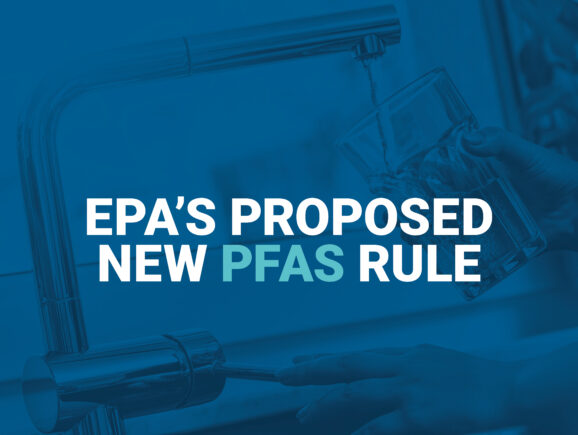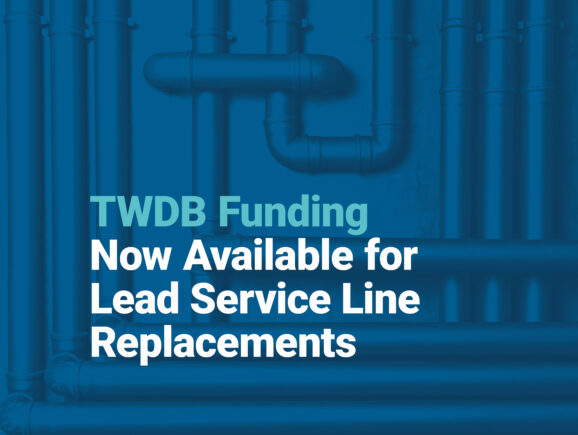TWDB Funding Now Available to Address Emerging Contaminants
The Texas Water Development Board has opened solicitations for projects that will address emerging contaminants, including per- and polyfluoroalkyl substances (PFAS). More than $60 million in funding for these projects will be made available through both the Clean Water State Revolving Fund (CWSRF) and the Drinking Water State Revolving Fund (DWSRF). This solicitation is a last step in the distribution of funds in Texas through these two funding programs from the Infrastructure Investment and Jobs Act (IIJA).
In 2021, the IIJA was enacted to address infrastructure improvements, and appropriated supplemental capitalization grant funds for Federal Fiscal Years (FFY) 2022 to 2026 for general activities, lead service line replacement, and emerging contaminants.
- The draft intended use plans (IUPs) covering Emerging Contaminants are available for comment and proposed projects may be submitted through June 7, 2023.
- The draft IUP covering Lead Service Line Replacements is available for comment and proposed projects may be submitted through May 23, 2023. (Read more: TWDB Opens Solicitation for Lead Service Line Replacement Projects)
- The State Fiscal Year (SFY) 2023 Intended Use Plans covering general activities using the FFY 2022 annual and IIJA appropriations were effective October 5, 2022.
Want to apply for emerging contaminant project funding in Texas? Here’s what to know:
How Much Funding is Available?
Under the Clean Water State Revolving Fund IUP: A total of $4.1 million is available as principal forgiveness (similar to a grant). Projects must be otherwise eligible in the CWSRF program with the primary purpose of addressing emerging contaminants.
Under the Drinking Water State Revolving Fund IUP: A total of $56.8 million is available as principal forgiveness. Projects must be otherwise eligible in the DWSRF program with the primary purpose of addressing emerging contaminants.
What are Emerging Contaminants?
In regard to wastewater, the EPA defines emerging contaminants as substances and microorganisms that may pose risks to human health, aquatic life or the environment. They include various types of chemicals found in personal care products, pharmaceuticals, industrial chemicals and pesticides.
In regard to drinking water, the EPA published a Contaminant Candidate List of drinking water contaminants that are known or anticipated to occur in public water systems and are not currently subject to EPA drinking water regulations.
Who Can Apply?
Clean Water State Revolving Fund projects: Cities, commissions, counties, districts, river authorities or other public bodies created by or pursuant to state law that have authority to dispose of sewage, industrial waste, or other waste, and wastewater treatment management agencies, including interstate agencies and water supply corporations that have been designated and approved as a management agency in the Texas Water Quality Management Plan, among a few others.
Drinking Water State Revolving Fund projects: Existing community public water systems, including political subdivisions, nonprofit water supply corporations, privately owned community water systems, nonprofit and non-community public water systems.
What Projects Are Eligible?
Clean Water State Revolving Fund projects: Projects that are otherwise eligible for CWSRF funding with the primary project purpose of addressing emerging contaminants, including projects involving publicly owned treatment works (includes collection systems), stormwater management, and nonpoint source pollution control projects.
Drinking Water State Revolving Fund projects: Projects that are otherwise eligible for DWSRF funding with the primary project purpose of addressing emerging contaminants, including, per the TWDB Draft IUP, emerging contaminants costs associated with the construction of a new treatment facility or upgrade to an existing treatment facility that addresses emerging contaminants, and development of a new source (i.e., new/replacement well or intake for a public water system) that addresses an emerging contaminant issue, among others.
What Utilities Can Do Now
Freese and Nichols can support you in your next steps:
- Determine your eligibility and compliance with the program’s special requirements, including but not limited to:
- Project consistency with current TWDB State Water Plan
- Water Conservation and Drought Contingency Plans
- The EPA Disadvantaged Business Enterprise program
- The American Iron and Steel Provisions and Build America, Buy America Act
- Prepare and submit your Emerging Contaminant Project Information Form, due June 7, 2023.
For assistance, contact Mark Evans, or your Freese and Nichols project manager.
Additional Resources
- TWDB Solicitation for Emerging Contaminant Funding
- Draft CWSRF & DWSRF Intended Use Plans for Emerging Contaminant Funding
- Project Information Forms for the CWSRF & DWSRF Emerging Contaminant Programs
- Freese and Nichols’ PFAS Resources page





